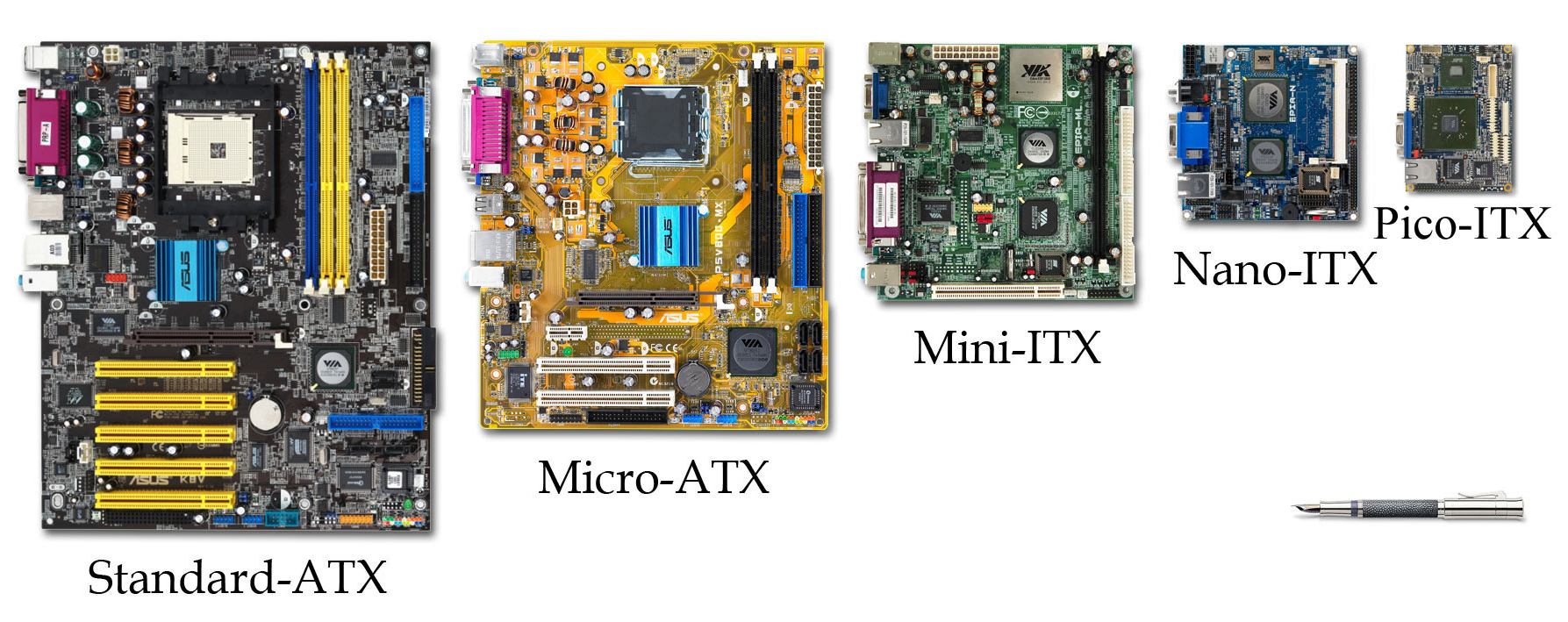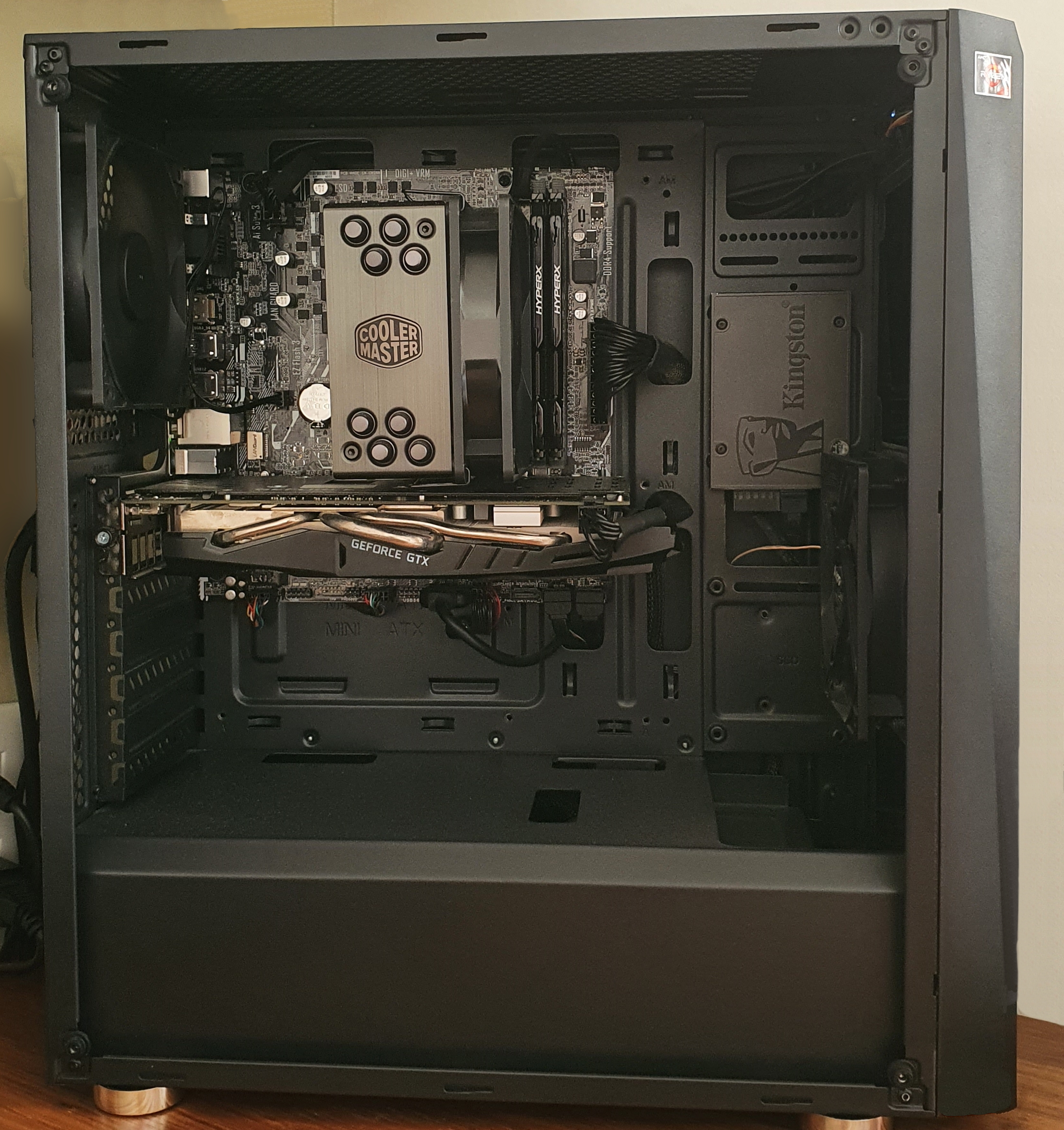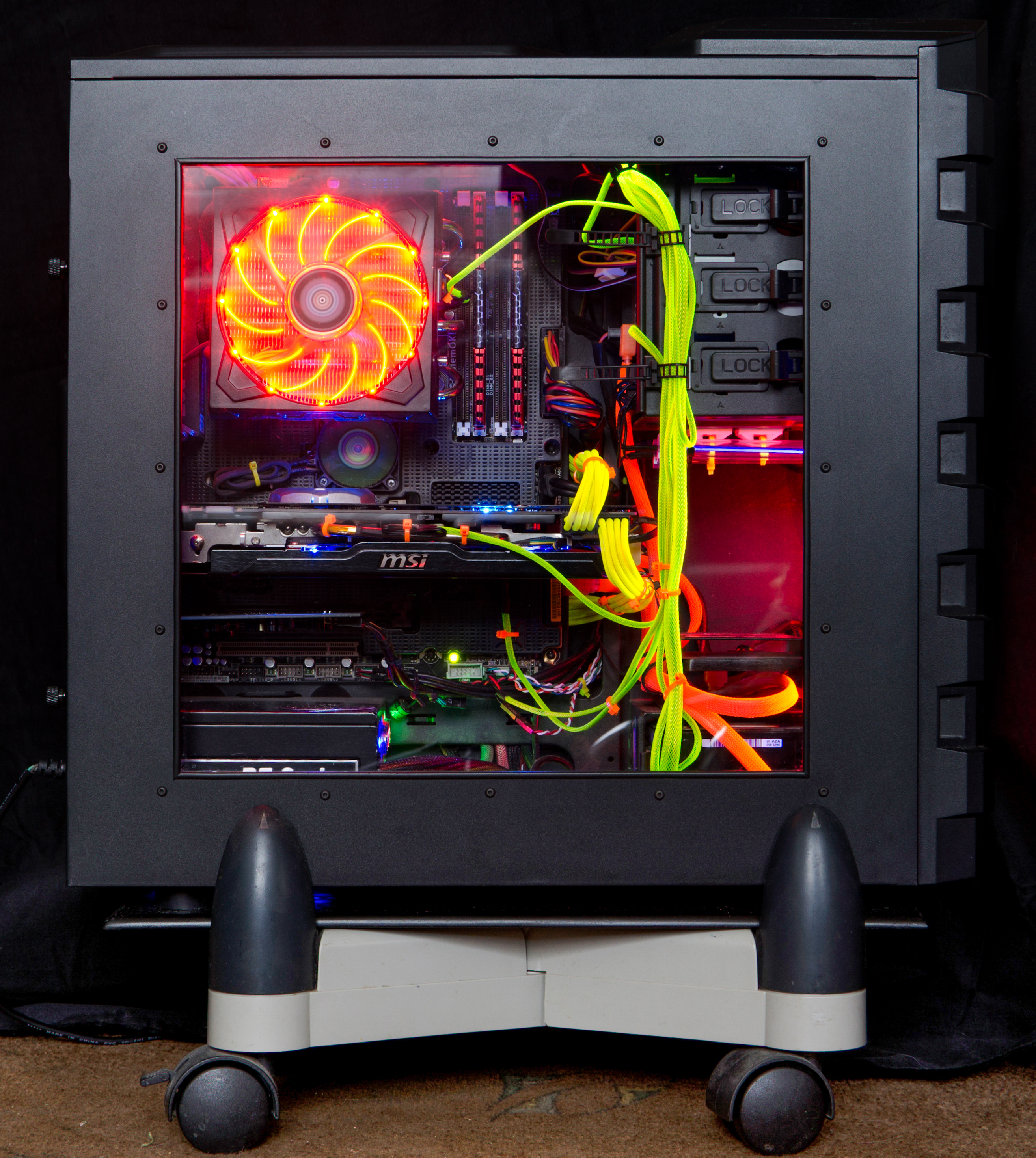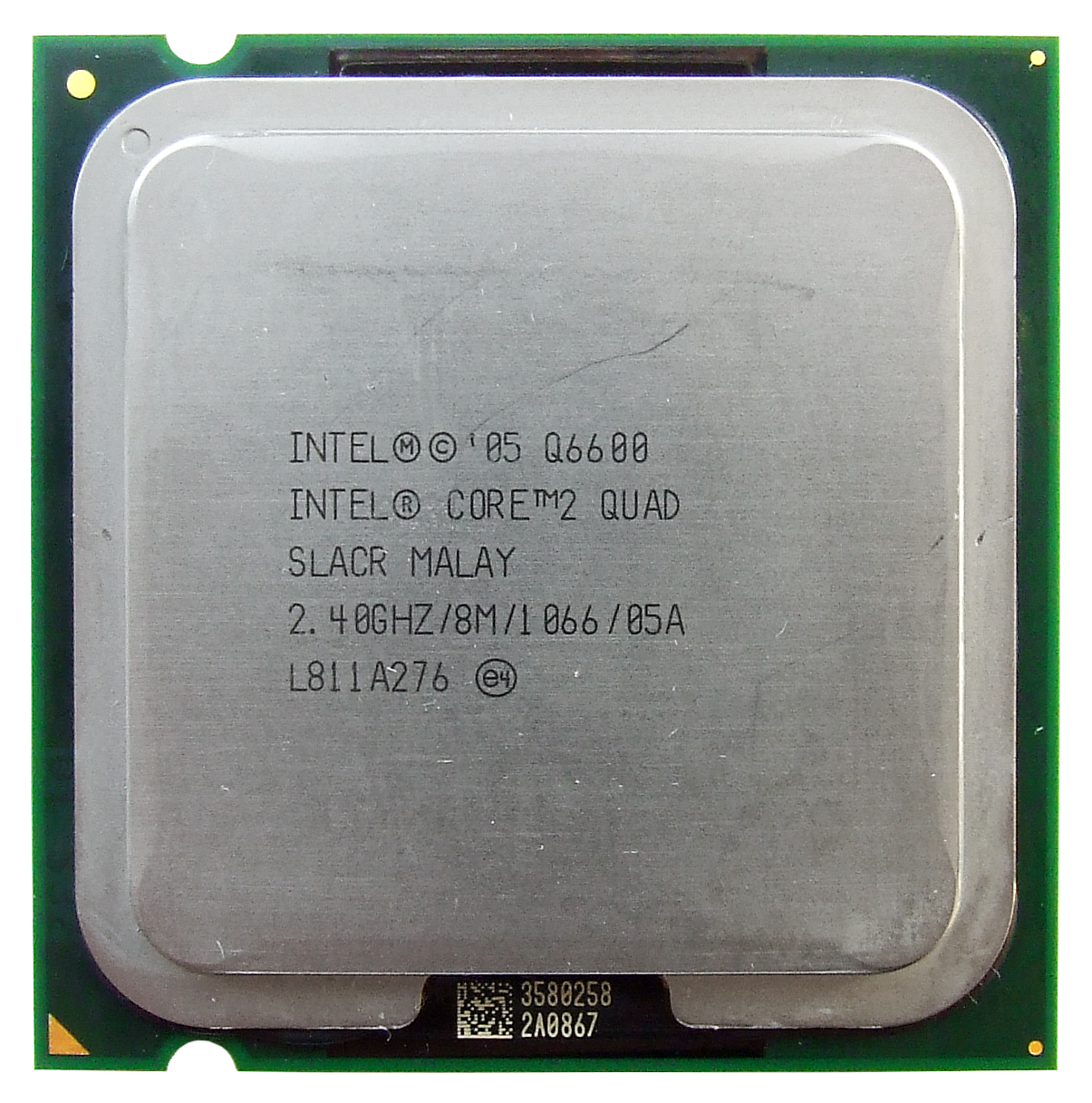|
White Box (computer Hardware)
In computer hardware, a white box is a personal computer or server without a well-known brand name. The term is usually applied to systems assembled by small system integrators and to homebuilt computer systems assembled by end users from parts purchased separately at retail. In this sense, building a white box system is part of the DIY movement.Dell eyes 'white box' market CNET News, August 20, 2002 The term is also applied to high volume production of unbranded PCs that began in the mid-1980s with 8 MHz Turbo XT systems selling for just under $1000. In 2002, around 30% of personal computers sold annually were white box systems. Operating systems While PCs built by system manuf ...[...More Info...] [...Related Items...] OR: [Wikipedia] [Google] [Baidu] |
Computer Form Factor
Form factor is a hardware design aspect that defines and prescribes the size, shape, and other physical specifications of components, particularly in electronics. A form factor may represent a broad class of similarly sized components, or it may prescribe a specific standard. It may also define an entire system, as in a computer form factor. Evolution and standardization As electronic hardware has become smaller following Moore's law and related patterns, ever-smaller form factors have become feasible. Specific technological advances, such as PCI Express, have had a significant design impact, though form factors have historically been slower to evolve than individual components. Standardization of form factors is vital for compatibility of hardware from different manufacturers. Trade-offs Smaller form factors may offer more efficient use of limited space, greater flexibility in the placement of components within a larger assembly, reduced use of material, and greater ease of tran ... [...More Info...] [...Related Items...] OR: [Wikipedia] [Google] [Baidu] |
Electronics Manufacturing
Electronics Manufacturing Services (EMS) is a term used for companies that design, manufacture, test, distribute, and provide return/repair services for electronic components and assemblies for original equipment manufacturers (OEMs). The concept is also referred to as Electronics Contract Manufacturing (ECM). Many consumer electronics are built in China, due to maintenance cost, availability of materials, and speed as opposed to other countries such as the United States. Cities such as Shenzhen and Penang have become important production centres for the industry, attracting many consumer electronics companies such as Apple Inc. Some companies such as Flex and Wistron are Original design manufacturers and providers of Electronics manufacturing services. History The EMS industry was initially established in 1961 by SCI Systems of Huntsville Alabama. The industry realized its most significant growth in the 1980s; at the time, most electronics manufacturing for large-scale product r ... [...More Info...] [...Related Items...] OR: [Wikipedia] [Google] [Baidu] |
Computer Enclosure
A computer case, also known as a computer chassis, is the enclosure that contains most of the hardware of a personal computer. The components housed inside the case (such as the CPU, motherboard, memory, mass storage devices, power supply unit and various expansion cards) are referred as the ''internal'' hardware, while hardware outside the case (typically cable-linked or plug-and-play devices such as the display, speakers, keyboard, mouse and USB flash drives) are known as ''peripherals''. Conventional computer cases are fully enclosed, with small holes (mostly in the back panel) that allow ventilation and cutout openings that provide access to plugs/sockets (back) and removable media drive bays (front). The structural frame (chassis) of a case is usually constructed from rigid metals such as steel (often SECC — steel, electrogalvanized, cold-rolled, coil) and aluminium alloy, with hardpoints for mounting internal hardware, case fans/coolers and for organizing cable manage ... [...More Info...] [...Related Items...] OR: [Wikipedia] [Google] [Baidu] |
White-label Product
A white-label product is a product or service produced by one company (the producer) that other companies (the marketers) rebrand to make it appear as if they had made it. The name derives from the image of a white label on the packaging that can be filled in with the marketer's trade dress. White label products are sold by retailers with their own trademark but the products themselves are manufactured by a third party. Common use White label production is often used for mass-produced generic products including electronics, consumer products and software packages such as DVD players, televisions, and web applications. Some companies maintain a sub-brand for their goods, for example the same model of DVD player may be sold by Dixons as a ''Saisho'' and by Currys as a '' Matsui'', which are brands exclusively used by those companies. Some websites use white labels to enable a successful brand to offer a service without having to invest in creating the technology and infrastru ... [...More Info...] [...Related Items...] OR: [Wikipedia] [Google] [Baidu] |
Homebuilt Computer
A custom-built or homebuilt computer is a computer assembled from available components, usually commercial off-the-shelf (COTS) components, rather than purchased as a complete system from a computer system supplier, also known as pre-built systems. A custom-built or homebuilt computer is usually considered cheaper to assemble as compared to buying a pre-built computer, since it excludes the labour cost associated with building the computer. However, depending on the person’s budget, build quality, and total cost of parts used, it can still be expensive to build a custom-built computer or equivalent (see Costs of building computers). Homebuilt computers are almost always used at home, like home computers, but home computers are traditionally purchased already assembled by the manufacturer. However, some suppliers provide both home and homebuilt computers, like the Newbear 77-68, which the owner was expected to assemble and use in his or her home. History Computers have bee ... [...More Info...] [...Related Items...] OR: [Wikipedia] [Google] [Baidu] |
Enthusiast Computing
Enthusiast computing refers to a group of people who build high-end personal computers that facilitate gaming, stock trading, video editing, music creation and editing, photograph editing, programming, remote work, cryptocurrency mining, and other hardware-intensive applications. Elements of an enthusiast computer may include cutting edge CPU(s), GPU(s), screen(s), cooling devices, cases, motherboard(s), input devices, computer memory, computer storage, virtual reality headsets, network cards, haptics, power supplies, and peripheral devices. Many manufacturers address this market by producing state of the art offerings which can then be integrated into a custom build. Influence of gaming Games have historically been the driving force behind the rapid pace of consumer hardware development. For example, ''The 7th Guest'' and ''Myst'' helped drive the adoption of CD-ROMs.Geoff Keighley"Haunted Glory: The Rise and Fall of Trilobyte" at ''GameSpot'' Intel and AMD both ... [...More Info...] [...Related Items...] OR: [Wikipedia] [Google] [Baidu] |
DIY Ethic
"Do it yourself" ("DIY") is the method of building, modifying, or repairing things by oneself without the direct aid of professionals or certified experts. Academic research has described DIY as behaviors where "individuals use raw and semi-raw materials and parts to produce, transform, or reconstruct material possessions, including those drawn from the natural environment (e.g., landscaping)". DIY behavior can be triggered by various motivations previously categorized as marketplace motivations (economic benefits, lack of product availability, lack of product quality, need for customization), and identity enhancement ( craftsmanship, empowerment, community seeking, uniqueness). The term "do-it-yourself" has been associated with consumers since at least 1912 primarily in the domain of home improvement and maintenance activities. The phrase "do it yourself" had come into common usage (in standard English) by the 1950s, in reference to the emergence of a trend of people under ... [...More Info...] [...Related Items...] OR: [Wikipedia] [Google] [Baidu] |
Beige Box
In consumer computer products, a beige box is a standard personal computer (PC). It has come to be used as a term of derision implying conservative or dated aesthetics and unremarkable specifications. The term is ultimately derived from the style of many early personal computers and dedicated word processors, which were usually beige or similar colors like off white or ecru. These colors were presumably chosen to allow the machines to blend inconspicuously into a variety of settings, especially among similarly colored cubicles and office equipment. IBM's early desktop computers (e.g. IBM Personal Computer, IBM PC/AT) were not only beige, but were distinctly box-shaped, and most manufacturers of clones followed suit. As IBM and its imitators came to dominate the industry, these features became unquestioned standards of desktop computer design. Some industrial design critics derided them as indistinguishable “beige boxes.” The Commodore 64 ( RAL 1019) or early Macintosh mod ... [...More Info...] [...Related Items...] OR: [Wikipedia] [Google] [Baidu] |
Optical Drive
In computing, an optical disc drive is a disc drive that uses laser light or electromagnetic waves within or near the visible light spectrum as part of the process of reading or writing data to or from optical discs. Some drives can only read from certain discs, but recent drives can both read and record, also called burners or writers (since they physically burn the organic dye on write-once CD-R, DVD-R and BD-R LTH discs). Compact discs, DVDs, and Blu-ray discs are common types of optical media which can be read and recorded by such drives. Drive types , most of the optical disc drives on the market are DVD-ROM drives and BD-ROM drives which read and record from those formats, along with having backward compatibility with CD, CD-R and CD-ROM discs; compact disc drives are no longer manufactured outside of audio devices. Read-only DVD and Blu-ray drives are also manufactured, but are less commonly found in the consumer market and mainly limited to media devices such as ... [...More Info...] [...Related Items...] OR: [Wikipedia] [Google] [Baidu] |
Hard Disk Drive
A hard disk drive (HDD), hard disk, hard drive, or fixed disk is an electro-mechanical data storage device that stores and retrieves digital data using magnetic storage with one or more rigid rapidly rotating platters coated with magnetic material. The platters are paired with magnetic heads, usually arranged on a moving actuator arm, which read and write data to the platter surfaces. Data is accessed in a random-access manner, meaning that individual blocks of data can be stored and retrieved in any order. HDDs are a type of non-volatile storage, retaining stored data when powered off. Modern HDDs are typically in the form of a small rectangular box. Introduced by IBM in 1956, HDDs were the dominant secondary storage device for general-purpose computers beginning in the early 1960s. HDDs maintained this position into the modern era of servers and personal computers, though personal computing devices produced in large volume, like cell phones and tablets, rely ... [...More Info...] [...Related Items...] OR: [Wikipedia] [Google] [Baidu] |
Motherboard
A motherboard (also called mainboard, main circuit board, mb, mboard, backplane board, base board, system board, logic board (only in Apple computers) or mobo) is the main printed circuit board (PCB) in general-purpose computers and other expandable systems. It holds and allows communication between many of the crucial electronic components of a system, such as the central processing unit (CPU) and memory, and provides connectors for other peripherals. Unlike a backplane, a motherboard usually contains significant sub-systems, such as the central processor, the chipset's input/output and memory controllers, interface connectors, and other components integrated for general use. ''Motherboard'' means specifically a PCB with expansion capabilities. As the name suggests, this board is often referred to as the "mother" of all components attached to it, which often include peripherals, interface cards, and daughterboards: sound cards, video cards, network cards, host bus adapters ... [...More Info...] [...Related Items...] OR: [Wikipedia] [Google] [Baidu] |









